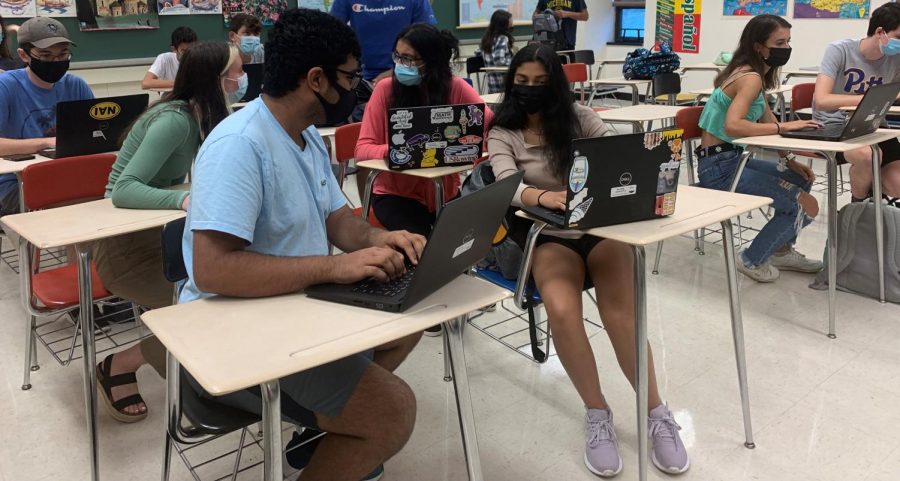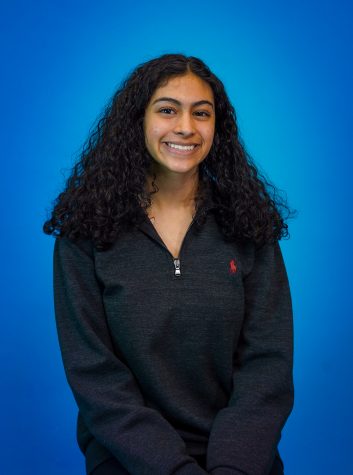A Year After NACA
Former NACA students adjust to going back to in-person learning.
Former NACA students Abhi Yarlagadda, Anjali Bandi, and Sonya Dhussa hard at work in class.
September 8, 2021
From rising at 7:22, groggily opening Blackboard, and joining first-period to sitting through frustrating traffic every day just to get a parking spot a seeming mile away from the building, former NACA students are experiencing a drastic change this year.
“Wow! Being back here is a huge change, I forgot what in-person school was like,” NASH senior Sonya Dhussa said.
During the 2020-21 school year, due to COVID-19, North Allegheny opened its first very own online school, North Allegheny Cyber Academy (NACA), a separate entity from any other North Allegheny school.
NACA itself offered many of the same courses that NAI or NASH provided and the classes not offered were able to be joined through the dual enrollment program. Dual enrollment was when a student was enrolled in NACA but took classes from NASH and NAI where they could livestream in. These classes made it so students were able to have the same teachers as their in-person peers and keep a sense of normalcy.
This year, however, NACA is still an option but the enrollment in the school, at least from the high schools, has decreased substantially. Now that many of the students who opted for NACA last year are back in school, they are getting a chance to see their classmates’ faces back in person.
“It is weird to see faces in person instead of hearing voices on a computer screen,” Dhussa said. “That being said, face-to-face conversations and interactions are easier and more fun to have than a virtual platform.”
Last year, every student, especially NACA students, had to adjust to a new schooling routine. Before school, after school, or even during school, their routine one way or another had shifted. But after a year of lounging around in pajamas, former NACA students are finding that being back in a classroom filled with students can lead to much more stress.
“Coming into school holds you to a higher level of responsibility in some ways; you cannot log into Collaborate last minute, or walk into the kitchen whenever you want,” Dhussa continued. “I think being in person has made me more focused on what I am doing and where I have to be.”
Many other students also agree with the notion that learning through NACA was still a struggle no matter how many months they were remote.
“I think going to NACA all year has done more harm academically than socially,” junior Amogh Paruvelli elaborated. “I found it more challenging to pay attention in class, especially with all the distractions at home.”
NACA didn’t impact only the academic aspect. For many of these students, clubs and outside activities were still offered to them but through an online setting. Many organizations opted to hold virtual meetings as well as hold competitions and conferences through Zoom or Google Meet. Since being at home cut out time waste like commutes and times between classes, it offered a chance for students to explore activities outside of what North Allegheny provides.
“NACA allowed me more time for extracurricular activities and the things I truly enjoy,” Paruvelli added. “I participated in school clubs such as Speech and Debate and Science Bowl online but also rekindled interests such as learning the guitar and piano—two time-demanding activities I wouldn’t be able to do had I gone in-person.”
Everyone has their own opinion about attending school from home. For some, it’s solely based on convenience, while others just learn better in person. Nonetheless, as the new school takes off, it will be interesting to see how these previous NACA students learn to re-adjust to the in-person school system.












